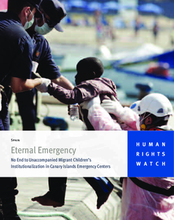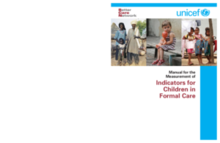Displaying 781 - 790 of 810
This paper uses a large nationally representative survey data to examine the impact of China's rural–urban migration on high school attendance of left-behind children by disentangling the effect of remittances from that of migration.
The Framework for the Protection of Children broadens UNHCR’s understanding of and engagement in protection of children. It articulates six goals that encapsulate UNHCR’s commitment to protect and realize the rights of children of concern to the Office, and offers practical guidance on how to achieve them.
This report provides data on children living in urban settings, including statistics, conditions, and personal testimonies. The report also includes UNICEF’s recommendations for policy regarding children in urban settings, working with this population, and for future action. Sections that are relevant to children’s care include: children living and working on the streets, migrant children, urban emergencies, and many more.
This analysis of the impact of internal migration on the time allocation patterns of the left-behind elderly and children in rural China, 1997–2006, contributes to the literature on changes in the well-being of the left-behind population.
This study involved a systematic review of individual, family, community and social risk and protective factors for the mental health of children and adolescents who were forcibly displaced to high-income countries.
This paper examines the relationship between migration and child growth in the rural highlands of Guatemala, a region with substantial international migration outflows, significant remittance inflows, and some of the highest rates of child undernutrition in the world.
This guidance note is part of the Handbook for the Protection of Internally Displaced Persons launched by the Global Protection Cluster in Geneva in June 2010. The target audience is staff of humanitarian, human rights and development agencies working in IDP operations in the field.
The Canary Islands were in the spotlight of international media attention in 2006 when more than 30,000 migrants arrived in rickety boats from West Africa. Among them were 928 children who arrived without a parent or care-giver.
Manual to assist countries in strengthening their information system around children in formal care through data collection around 15 global indicators
This report from Save the Children examines the experiences of “children on the move,” the types of supports they need, and how protection systems can be adapted to meet those needs.






